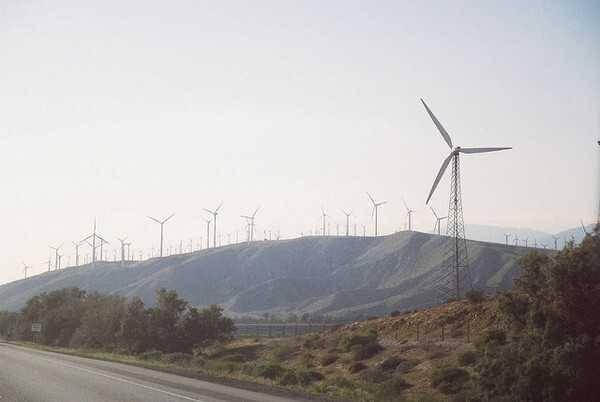Wind Production Tax Credit Blows Through Another Hurdle

Aging wind turbines in the San Gorgonio Pass | Photo: Gillian/Flickr/Creative Commons License
A plan to renew a $12 billion federal production tax credit for utility-scale wind projects has cleared a hurdle in Congress, as it passed a vote of the Senate Finance Committee late last week. The 19-5 vote August 2 saw some Republican Senators cross party lines to vote to extend the tax credit, which expires at the end of this year.
The tax credit is intended to promote development of wind power capacity in the U.S., which has surpassed 50 gigawatts -- this according to a statement made yesterday by the American Wind Energy Association at the National Clean Energy Summit in Las Vegas.
Under the rule, owners of utility-scale wind installations receive a tax credit of 2.1 cents for every kilowatt-hour of power they generate. A two-megawatt wind turbine could earn tax credits up to $4.20 for every hour it operates.
Critics of the tax credit have argued that the wind industry is mature enough to get by without subsidies. Wind advocates point out that the inarguably mature fossil fuel industry enjoys numerous federal subsidies, and worry that without an extension of the credit installations and upgrades may falter.
The extension, which would have an estimated cost to taxpayers of another $3 billion, must still make it through the full Senate and the House of Representatives. Passage through the Republican-held House is far from certain. Though GOP politicians are generally in favor of tax credits and such extensions are usually fairly routine, renewable energy has become a bit of a political football. It's widely commented that the GOP is looking for any issue they can throw at the Obama administration that will stick; in the wake of the Department of Energy loan program's involvement in the Solyndra bankruptcy, renewable energy would seem to be one such issue.
Then again, wind is an especially important industry in many conservative states such as Texas, which had more than 10 gigawatts of installed capacity by this past March. Five states generate more than 10% of their power consumption with wind, and of the five -- the Dakotas, Iowa, Minnesota, and Wyoming -- only Iowa and Minnesota leaned Democratic during the last presidential election. Local business interests may well prove to trump the interests of party politics when it comes to GOP Representatives from the windy Great Plains states.
ReWire is dedicated to covering renewable energy in California. Keep in touch by liking us on Facebook, and help shape our editorial direction by taking this quick survey here.


